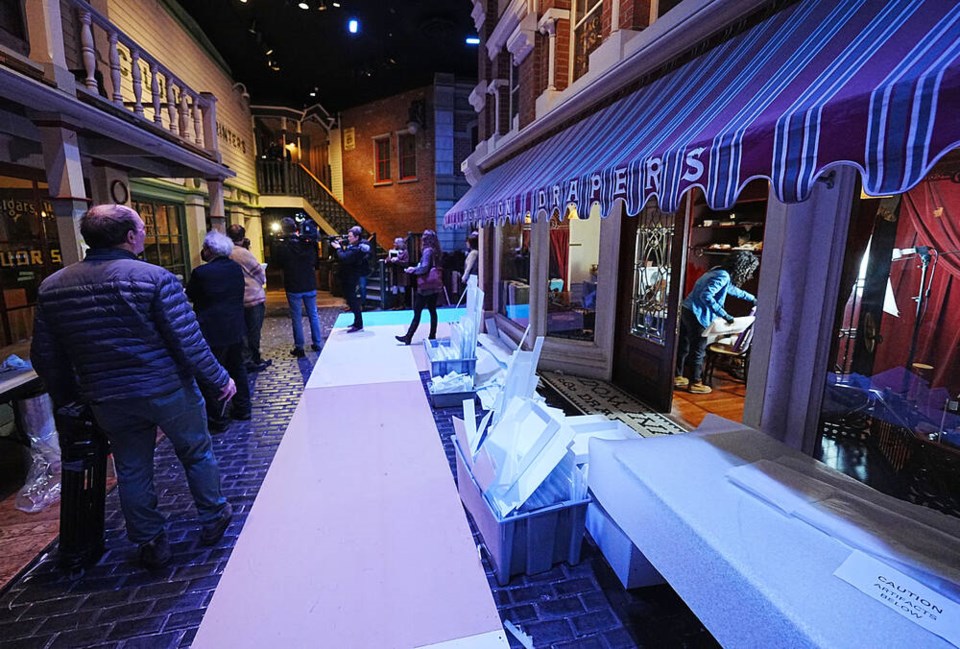The endlessly fascinating tale of the Royal saąúĽĘ´«Ă˝ Museum’s closed-off third floor took another turn this week.
In the massive data dump that accompanies the release of a provincial budget, the RBCM’s new service plan was included.
It has a different attitude to reopening the dormant exhibits than CEO Alicia Dubois had a day earlier, when she gave media a tour of the third floor.
Standing on the cobbled main street of the once-popular Old Town, she was asked: “When will this place be open again?”
She said it was dependent on the feedback from the consultation now underway “and our ability to curate stories with communities.
“So it’s hard for me to say specifically when this is going to happen. I suspect what we will do is take it in phases so that we’re not redoing everything with a very long pause and then reopening all at once.”
Her best guess was “perhaps” this year.
But a day later the service plan was made public. It proclaimed: “The RBCM is now intensely focused on reopening the third-floor galleries to the public.”
It also refers to “an accelerated drive to reopen the closed gallery spaces” as one of the key financial and operational challenges ahead. Others listed are the years-long public engagement process and stewardship of the collections in preparation for moving them all to a new facility in Colwood.
Maybe it’s just semantics. But the service plan, which was signed in early February by the board chair, sounds lot more bound and determined to quickly re-open the third floor than the CEO does.
Elsewhere, the board and the CEO are closely aligned on a fundamental change of approach.
Stemming partly from the Truth and Reconciliation Commission’s appeal to all museums, the service plan says RBCM is expanding its approach to develop exhibitions with community partners and “transparently communicating that it is not the omniscient ‘historical expert’ authority.”
It is aiming to transform its role from the provincial story teller to a facilitator, empowering British Columbians to share their stories in their own words.
“Inviting communities to co-create exhibitions reflects RBCM’s desire to challenge the false perception that it is the indisputable authority on human and cultural history in the province.”
RBCM’s latest financial statement in the service plan shows the $30-million-a-year enterprise expects to run a $5.8 million deficit this year, similar to last year. The taxpayers’ contribution is being increased seven per cent, to $12.7 million.
The museum is deeply invested in recouping some of that loss and recovering from the pandemic impact by importing exhibits from elsewhere. It is counting on almost doubling total revenue, and more than doubling admission fee revenue, three years running.
The expected boost will come from “blockbuster, must-see” feature exhibitions. Wildlife Photographer of the Year; Angkor: The Lost Empire of Cambodia; and SUE: The T-rex Experience are all scheduled, along with a Dinosaurs of saąúĽĘ´«Ă˝ exhibition. An Indigenous exhibition is also in the works this spring.
Some of them will be running at the same time.
“As the RBCM has never before hosted more than one feature attraction at a time, it anticipates that the concurrent display… will be a compelling draw.”
Even with the anticipated dramatic jump in revenue, RBCM is still budgeting for three years of deficits in the $1.5 million range.
RBCM staff said during the media tour they are pleased with how attendance has rebounded from COVID-19 so far.
If the imported shows draw the crowds as expected, they’ll bring in the traffic and revenue that dropped two years ago.
But the thorny, sensitive issue of how to present saąúĽĘ´«Ă˝’s own stories remains. The service plan aligns with Tourism Minister Lana Popham’s desire to reopen Old Town as soon as possible.
But whether the “intense focus” and “accelerated drive” will succeed when there’s so much else going on there is still up in the air.
Just So You Know: Media, including this space, have referred to the NDP’s decisions last year to announce a $780-million redevelopment plan for the entire museum then give up a few weeks later in the face of public opposition and go back to square one as a “fiasco,” a “debacle,” etc.
The service plan prefers different phrasing. It calls that whole affair “the redirection on the modernization” and says it is a substantial opportunity “for progressive change and improvement.”
>>> To comment on this article, write a letter to the editor: [email protected]



